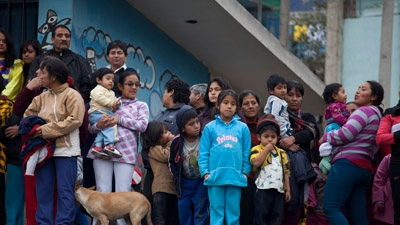Latin America's economies will grow in the next two years at a rate of 3.3%, which which an average family in the region will be able to afford more goods and services. But this won't be enough to reach the goal of eradicating extreme poverty by 2030, according to the World Bank's Global Economic Forecast 2014 study. Derek Chen, who wrote the chapter on Latin America, says that despite healthy growth forecast for the region, its Achilles' heel will continue to be the huge inequality in incomes.
Question: The GEP forecasts average growth for LAC at 3.3 percent per annum over the medium term. How does that compare to growth levels before the global financial crisis and to population growth rates?
Answer: For the years 2004 to 2007, LAC GDP grew at an average rate of 5.3 percent per annum. Therefore our average growth forecast of 3.3 percent for the years 2014 - 2016 is relatively lower, noting that this relatively lower growth is broadly in line with the potential growth rate for the region.
The LAC region’s population is growing around 1.15 percent per year and continues to slow down. Given that real GDP growth is faster than population, GDP per capita (in real terms) is also on the rise. We forecasts real GDP per capita growth in the region to accelerate from 1.7 percent in 2014 to 2.7 percent in 2016.
Q: With that in mind, what does it mean more concretely for the region to be growing at its current levels? (at a micro level, what does it mean for families and businesses?)
A: With the expected growth rates, the region’s real GDP per capita should be around or close to US$6,000 per capita. It would mean that the average family in the region should be able to afford more goods and services. However, while growth is necessary for improving living standards it may not be sufficient. Equally important is the distribution of the wealth generated. Indeed, income inequality remains high in the region.

